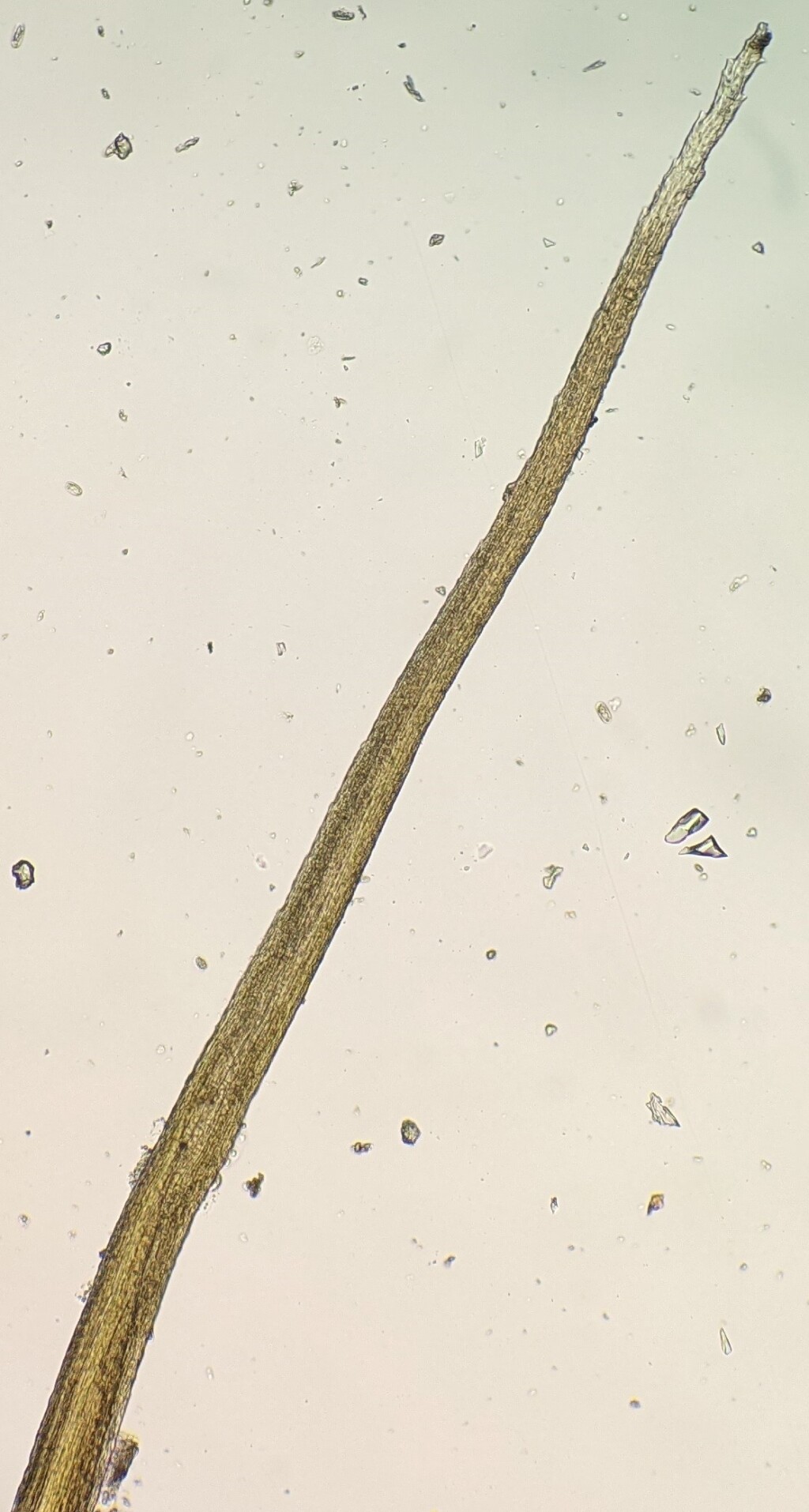Ditrichaceae
Autoicous, paroicous, synoicous (not in Victoria) or dioicous. Asexual reproduction by filamentous gemmae scattered along stems, caducous innovations or rhizoidal tubers. Tufts, turves or mats on soil, rocks or logs. Stems simple, forked or branched by innovation, with rhizoids restricted to base; central strand present. Leaves arranged around stem and facing all directions, monomorphic or becoming larger toward stem apex, falcate-secund, erect to erect-spreading when moist, scarcely altered, becoming appressed to stem, or flexuose, contorted or somewhat crisped when dry, often with a sheathing base; apex obtuse, acute, acuminate or subulate, sometimes with a hair-point; costa single, subpercurrent to excurrent sometimes broad and occupying around 1/3 leaf width at base; margin entire, serrulate or serrate, plane, recurved or incurved, without a border; laminal cells quadrate, hexagonal, rhombic, oblong or rectangular, becoming more elongate toward base and often also toward margins, smooth or rarely prorulose (not in Victoria) or prorate at both ends toward apex (not in Victoria); alar cells not differentiated. Acrocarpous. Capsule erect, inclined or horizontal, symmetric or asymmetric, exserted or immersed, operculate or cleistocarpous, smooth or sulcate when dry, with an annulus when operculate. Calyptra cucullate or rarely mitrate (not in Victoria), smooth, glabrous. Operculum conic or rostrate. Peristome absent or a single series of 16 teeth split almost to base into filiform segments or remaining entire, with or without a low basal membrane.
The circumscription of this family is still not clear, but could potentially comprise around eight genera; potentially three genera and eleven species in Victoria.
The Victorian genera Chrysoblastella and Distichium were previously included in the Ditrichaceae based on their peristome which comprised terete thread like segments without vertical pit-straitions (Seppelt 2007; Fedosov et al. 2015). However, these genera are well separated phylogenetically from Ditrichum and so are now recognised as their own families (Fedosov et al. 2016; Santos et al. 2021). The remaining Ditrichaceae also comprise several separated lineages that in DNA phylogenies diverge within or near the base of a group comprising the haplolepideous (single peristome series equivalent to endostome) mosses. Ditrichaceae resolved near the base of the haplolepideous mosses, which includes several misplaced Ditrichum species, have been segregated as separate families, and in the case of Ditrichum, as the separate genus Flexitrichum (Fedosov et al. 2016). However, one lineage of species identified as Ditrichum, including a specimen similar to the Victorian D. cylindricarpum (Müll.Hal.) F.Muell., diverges separately to Flexitrichum near the base of the haplolepdeous mosses, but has not been taxonomically revised (Santos et al. 2021). The relationships among traditional Ditrichaceae taxa resolved within the haplolepdeous mosses is uncertain and requires further study. Currently, there is a lack of statistical support that these taxa form a group as would be expected if they were treated as a family, but there is also a lack of statistical support that several of these lineages do not form a group (Fedosov et al. 2015, 2016). In Victoria, the genera Ceratodon, Ditrichum, and Pleuridium are resolved within the haplolepideous mosses, could potentially form a single group (clade), and are tentatively retained within Ditrichaceae pending further study. The description provided applies to traditional Ditrichaceae lineages resolved within the haplolepideous mosses that could potentially form a single group (i.e. clades Dt5, Dt7, and Dt8 of Fedosov et al. 2016).
 Spinning
SpinningFedosov, V.E.; Fedorova, A.V.; Fedosov, A.E.; Ignatov, M.S. (2016). Phylogenetic inference and peristome evolution in haplolepidous mosses, focusing on Pseudoditrichaceae and Ditrichaceae s.l.. Botanical Journal of the Linnean Society 181: 139–155.
Fedosov, V.E.; Fedorova, A.V.; Ignatova, E.A.; Bobrova, V.K.; Troitsky, A.V. (2015). rps4 and nad5 sequences indicate the polyphyly of Ditrichaceae and parallelislms in the evolution of haplolepidous mosses. Molecular Biology 49: 890–894.
Santos, M.B.; Fedosov, V.; Hartman, T.; Fedorova, A.; Siebel, H.; Stech, M. (2021). Phylogenetic inferences reveal deep polyphyly of Aongstroemiaceae and Dicranellaceae within the haplolepideous mosses (Dicranidae, Bryophyta). Taxon 70: 246–262.
Seppelt, R.D. (2007). Ditrichaceae, in Flora of North America Editorial Committee (eds.), Flora of North America North if Mexico, Vol. 27: Byophyta: Mosses, part 1. pp. 443–467. Oxford Press, New York and Oxford.

